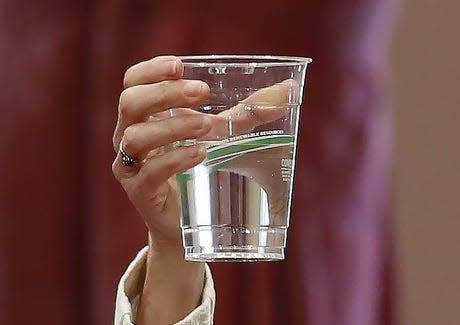Limit on 'forever chemicals' in RI drinking water moves closer to approval
PROVIDENCE – Three years after it was proposed in Rhode Island, a statewide limit on so-called “forever chemicals” in drinking water is moving to the verge of passage.
The House Committee on Environment and Natural Resources on Friday approved a bill that enacts a standard of 20 parts per trillion for six of the most common compounds in the family of per- and polyfluoroalkyl substances, or PFAS. The human-made chemicals, which are used in cookware, food packaging, firefighting foam and other products, have been linked to cancers, hormonal disruption, low birthweights and other health problems.
The vote follows Senate approval of the standard, meaning it’s now up to the full House to decide whether to approve the bill and move it one step closer to the governor’s desk. This is the furthest the legislation has gotten since it was first put forward in 2019. It passed the Senate last year but stalled in the House.
PFAS regulation: Move to cap 'forever chemicals' in RI drinking water under discussion

RI PFAS limit may already be obsolete
While the bill’s progress will be welcomed by clean-water advocates, it comes amid an ever-evolving understanding of the public-health dangers posed by PFAS chemicals that could make Rhode Island’s standard outdated before it’s passed.
Earlier this week, the U.S. Environmental Protection Agency released new health advisories for two of the most common compounds in the chemical class, both of which would be regulated by the Rhode Island bill. Under the EPA’s new findings, virtually no detectable amounts of PFOA or PFOS are considered safe to consume.
So while the state is considering regulating PFOA in parts per trillion, the EPA’s recommendation is in the parts per quadrillion, a level that is 1,000 times more stringent.
If the cap makes it into state law, Rhode Island would join a growing list of other states in the nation, including most in New England, that have placed a limit on the concentration of the chemicals in drinking water systems.
PFAS in other states: EPA reveals new recommendations for 'forever chemicals' in drinking water far lower than the new Wisconsin standards
Which products contain PFAS?
Invented in the 1930s and heralded for their ability to repel oil, water and grease, PFAS compounds were used by such companies as Dupont to make Teflon and by 3M to make Scotchgard. Their use is also effective in smothering petroleum fires.
Today, there are thousands of the substances that have been used in many types of consumer items, such as microwave popcorn bags, rain jackets, dental floss, guitar strings and carpets.
The compounds don’t break down in the environment over time, thus the “forever chemical” moniker.
While studies have found that people are exposed through food and even indoor air, the chemicals are most associated with drinking-water contamination.
Enactment of the bill would mean at least half-a-dozen water systems in the state, including the one at the University of Rhode Island, would be faced with the potential cost of investing in expensive filtration technology.
PFAS exposure: Indoor air might be contaminated by 'forever chemicals,' study shows
Testing for PFAS in RI drinking water
Over the last nine years, the state Department of Health has tested every major drinking water system, every school and smaller systems in the state. PFAS were found in nearly half of the 87 systems tested, and 13 systems had levels above 20 ppt for five of the most widely used compounds.
Only one system, the Oakland Association, in Burrillville, had numbers above the previous EPA advisory level of 70 parts per trillion for PFOA and PFOS. The state Department of Environmental Management determined the source of the contamination to be the Oakland-Mapleville Fire District. A new water line to supply the neighborhood was completed in 2019.
For the remaining systems that tested higher than the proposed 20 ppt cap, concentrations of the chemicals in some places, such as Westerly, have dropped over time. There and in Cumberland and Pawtucket, the high results were collected from individual wells. Because those systems all blend water from multiple wells, results were never high within their distribution networks, according to the health department.
Still, Cumberland shut off its wells with high levels. And Pawtucket already has technology in place to filter out PFAS.
The places that may still require treatment are North Smithfield High School, West Glocester Elementary School, the Ladd Center in Exeter, Captain Isaac Paine School in Foster, the system for Scituate middle and high schools, and the University of Rhode Island, which serves some 19,000 people.
This article originally appeared on The Providence Journal: RI drinking water bill could pass, but its PFAS limit may be obsolete
